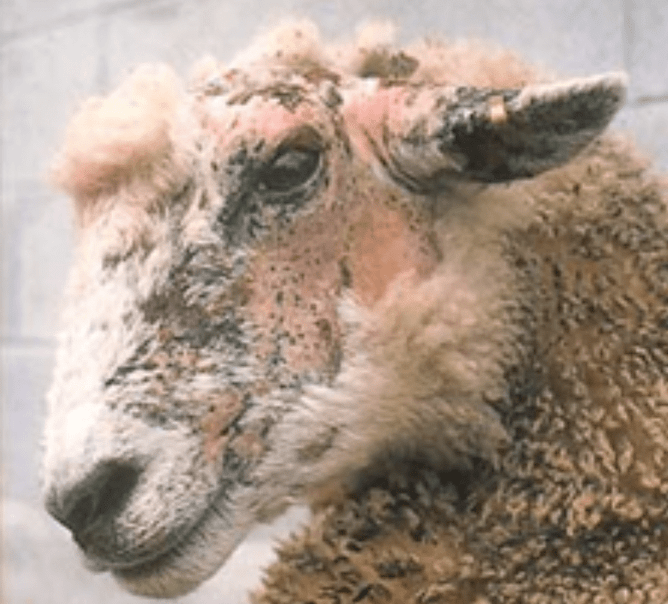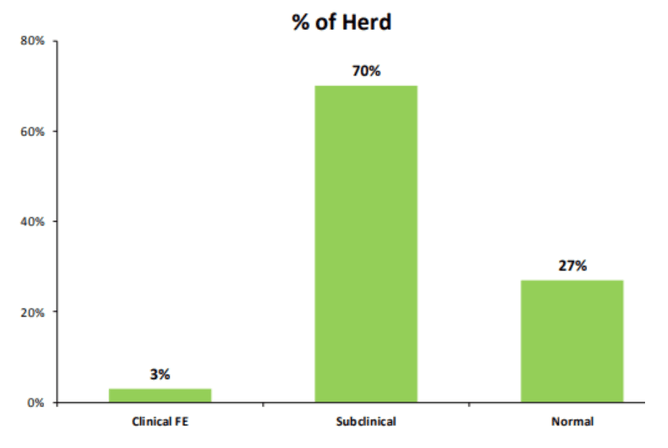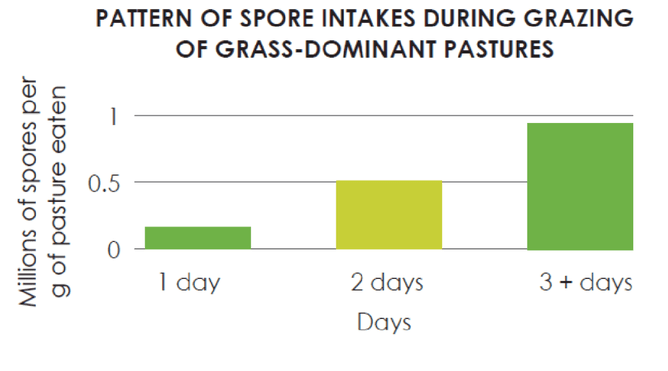On February 16th Briar Huggett from Beef and Lamb, Angela Leslie from Dairy NZ and myself put on a presentation about Facial Eczema (FE), with more emphasis on sheep and beef farms. Unfortunately, we did not get a great turn-out, but those that did make it got some valuable information and discussion about FE. Below is a summary:
Facial eczema was diagnosed in Dairy Herds on the West Coast for the first time in 2016. No doubt it had been lingering around for longer than this undiagnosed. It is a disease that comes and goes, but with that dreaded climate change we are only going to see more of it around. Anecdotal evidence suggests that ewe flocks may have been hit a couple of years ago, with lower scanning percentages seen on multiple farms.
What is Facial Eczema?
It is caused by the ingestion of spores of a fungus, growing in the dead matter in the base of the grass sward. The spores produce a toxin that attacks the liver, which in turn causes a build-up of other toxins in the animal's bloodstream. These toxins react with light causing ‘photosensitization’.
Perfect conditions for sporulation are warm and humid:
Humidity close to 100%
Grass temperature above 12ᵒC for four consecutive nights
Usually 4mm rain within 48 hours
Clinical signs generally occur 14 days after ingestion of the toxic spores. On the West Coast, our risk period is later than the North Island. For us, this seems to be late February - mid March.
Clinical signs: SHEEP
These can be varied from very mild to severe signs and are sometimes harder to distinguish than in cattle
Restlessness, head shaking and seeking shade
Drooping ears and swollen eyes and face
Skin reddened, crusty, dark
Yellow mucous membranes, inappetence, weight loss
Clinical signs: CATTLE
A common misconception is that black animals cannot get FE, this is not true, they just don’t show the typical signs
Restlessness, seeking shade
Hair on back standing up
Reddening and swelling of exposed hairless or white patches, udder, eyelids and vulva
Can look like ‘colic’ (a sore belly)
Costs of FE - clinical vs subclinical:
This is a ‘tip of the iceberg’ disease - sometimes you might only see 1-2 animals, but the damage in the liver is causing underlying problems such as:
Greater loss of ewes
Lower scanning rates
A lower number of lambs born
Poor growth rates in lambs
Poor ewe LWT and BCS
Liver damage/Liver Fluke?
A drop in milk production
Once animals are affected there is not much we can do for them. The best thing is PREVENTION!
Monitoring the risk period via spore counting. Spore counts give us a rough estimate of the risk. The most important part of spore counting is to monitor the trend. As the spores begin to rise this tells us we need to start our zinc treatment.
Prevent animals from eating the spores. The spores are concentrated in the dead matter of the grass. Grazing management is important, as seen in the below graph the longer the animals are in the paddock the more spores they are likely to eat (due to grazing down lower). There are also ‘FE safe’ pastures that can be fed: chicory, plantain, legumes and tall fescue. A summer crop is also another option to prevent the ingestion of spores.
Prophylactic zinc. Zinc helps to prevent damage to the liver. One thing to note is that copper and zinc work against each other, so during the facial eczema season you should not administer copper to your animals. For sheep and beef animals the safest and most reliable option is zinc boluses. These give 6 weeks protection, so we need to know when the risk period is to give the optimal protection. A second bolus can be given to top up for another 4 weeks.
Breeding for resistance. This is something that needs more work, but if you can buy rams that are FE tolerant it will benefit in the long term. There will often be a trade-off with other characteristics so it is important to determine what your farm goals are.



